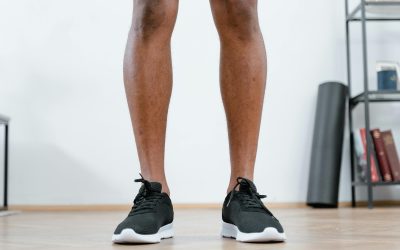If you’ve noticed bulging veins in your legs, you might be worried that it’s time to see a specialist.
You’re not alone — millions of people have enlarged, twisted, or rope-like veins that appear just beneath the surface of the skin. These are commonly referred to as “varicose veins.”
While bulging veins are usually simply a cosmetic concern, they can be indicative of underlying circulation issues. Over time, they can also cause a host of problems.
We’re vein specialists in the Milwaukee, Wisconsin area. Over the years, we’ve helped countless people resolve their vein problems, and today, we’re here to help you figure out when you need to call a specialist like us.
Why Do Veins Bulge in the Legs?
The veins in your legs have a difficult job. Their task is pumping blood back to the heart — which, in the legs, means pushing blood upward against gravity.
This is accomplished using tiny one-way valves inside the veins, which keep blood flowing in the right direction.
Over time, these valves can weaken or fail, causing blood to pool in the veins. This causes the veins to enlarge and bulge outward, resulting in what we commonly call “varicose veins.”
Typically, these veins appear dark blue, red, or purplish in color, with a twisted, rope-like appearance. They are usually found on the calves, behind the knees, or along the thighs.
Common Symptoms That Accompany Bulging Veins
Often, bulging leg veins don’t result in any physical discomfort — at least, not initially. However, many people with varicose veins notice that, eventually, they will start to feel an ache or throbbing pain in their legs.
This is also occasionally accompanied by heaviness or fatigue that gets worse after prolonged periods of standing. Other potential side effects include swelling, itching, burning, restlessness, and skin discoloration.
If you start to feel any of these symptoms, it’s a sign that your veins aren’t able to effectively pump blood anymore. As a result, you might want to consider treatment.
When Bulging Veins Become a Health Concern
There are many reasons why one might want to consider vein treatment.
For some, varicose veins are primarily a cosmetic concern, and they want to have those veins treated in order to improve the appearance of their legs.
For others, getting one’s varicose veins treated can slow the impact of chronic venous insufficiency.
If one does not treat chronic venous insufficiency, they can see skin color change, venous ulcers that heal slowly, or blood clots.
Take a look at your varicose veins, and make an assessment about how you feel. Do you see swelling, changes to your skin, or sores that won’t heal? Do you feel that your legs are abnormally tired, or do you face restlessness in your legs while trying to sleep? If the answer to any of those questions is “yes,” it’s time to consult a vein specialist.
Why You Should See a Vein Specialist
There are more reasons to see a vein specialist beyond simply getting your varicose veins treated.
A vein specialist can give you a thorough examination and evaluate your condition, allowing them to see how blood flows through your veins and identify any valve malfunctions.
By getting an accurate diagnosis of your issues, they will be able to tell you which veins are simply cosmetic issues and which ones can create further problems down the line.
From there, they can offer personalized treatment options tailored to your needs, whether that’s lifestyle changes, compression therapy, or minimally invasive procedures.
Early treatment helps stop worsening symptoms and reduces the risk of long-term complications. Plus, our patients have found that treatment improves both comfort and appearance, restoring confidence in the way their legs look and feel.
Conclusion
If you have varicose veins but aren’t sure whether they’ll be an issue in the future, or if you simply want another opinion about your new veins, reach out to us today.
We’ll be able to provide you with a comprehensive examination of your veins, as well as offer and provide solutions in the event that you decide treatment is the best option. Our treatments are minimally-invasive with low downtime; many of our patients are able to return to work and normal everyday activities on the same day as their treatment.



